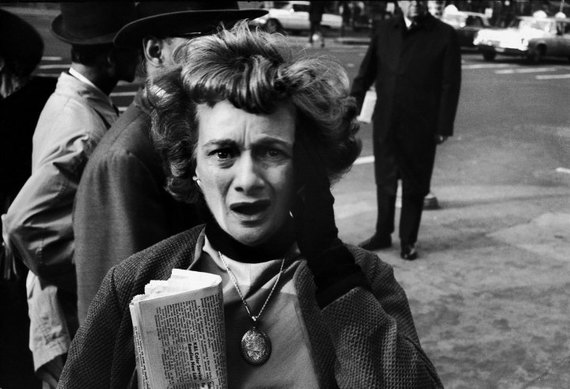

A pairing of photographs of emotionally captivated women charts a course of events 50 years ago which can tell us something, today, about the power of the arts and the humanities to affect the quality of human life, and more, to ensure the survival of its spirit.
The first photograph has been celebrated by Life magazine for encapsulating "the world's dismay and disbelief" over the assassination of President Kennedy in November 1963. The woman's anguish (seen clutching the newspaper that had brought her the news) is palpable, and was shared by millions of women and men throughout the United States and abroad. All of us in our 50s and older can recall adults in tears, a level of remorse associated only with the death of loved ones, and then the insistence on quiet in the household during the televised funeral.
The second photograph, taken almost three months later, also from Life magazine archives, is almost generic: a snapshot of Beatlemania, and of a woman, like millions of young women and men, in the throes of a response to something equally unprecedented. This time, in February 1964, the shock was rooted in delight, not remorse, and no one was keeping quiet. These are parallel, uncontrollable human responses, drawing on something external, something awe-inspiring created by other human beings. The first ages us and draws us closer to death; the second is an ageless youthful desire to live forever.
Much has been written about the connection between Beatlemania and the Kennedy assassination, most recently in Slate magazine dispelling any formal or causal connection between the events. From another perspective, however, there's no reason to make claims or to dispute them. The connection is in the photographic record, and the explanation is in restorative power of the arts and humanities.
What happened between November 1963 and February 1964 was the transformation of horror into joy through the experience of art. The four British musicians mined the roots of American music, especially rhythm and blues, and delivered it back to a nation craving a way out of its despair. The historical coincidence on November 22, 1963 -- the day Kennedy died and the day With the Beatles was released in the U.K. -- provides a rare opportunity to examine the power of art to revive the human spirit. The Beatles arrived in the U.S. in February 1964 with covers of American Motown songs and with new music reminding us of joy in the simplest of desires. "I Want to Hold Your Hand" was the #1 song on Billboard when the Beatles toured in the United States, 50 years ago. New life, like sudden, tragic death, can take us all by surprise, and can have us wailing.
In February 2014, we mark the 50th anniversary of one of the greatest examples of the regenerative potential of the arts. We should mark the anniversary by examining the extent to which we comprehend the importance of the arts and humanities to our well-being and to our communities, and the extent to which our culture and politics -- including our educational institutions -- support and encourage this vital dimension of our lives.